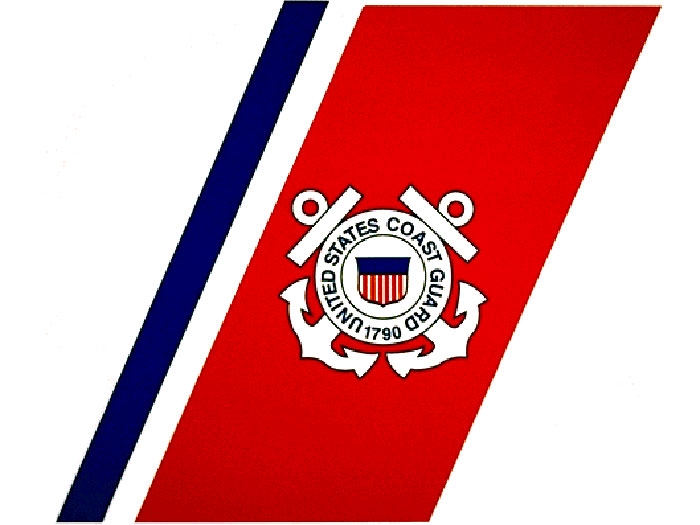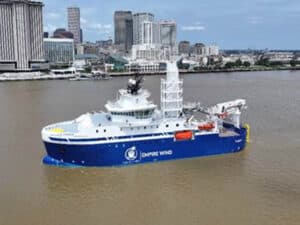
USCG issues safety alert on fuel switching
Written by Nick Blenkey
MARCH 3, 2015 —Making the required switch from conventional to ultra low sulfur fuel oil before operating within Emission Control Areas is causing headaches. The Coast Guard says that recently, there have been several reported incidents involving substantial machinery space fuel leakages while vessels were switching fuel oil and that, though the leakages were contained, fuel releases of any kind may result in pollution, injury or death of personnel and shipboard engine room fires. Additionally, many losses of propulsion have occurred in different ports and have been associated with changeover processes and procedures.
In response to these reports, the Coast Guard has issued a Marine Safety Alert (Safety Alert 2-15) as a reminder to vessel owners and operators about the importance of establishing effective fuel oil changeover procedures.
Following is taken from the text of the report:
On January 1, 2015, the new fuel oil sulfur limit authorized by MARPOL Annex VI, Regulation 14.3.4 came into effect, lowering fuel sulfur content from 1.0% to 0.10%. The 0.10% fuel sulfur content must be used the entire time the vessel is operating in the North American and U.S. Caribbean Sea Emission Control Areas (ECA). As a result, vessels using higher sulfur content fuels must change to ultra low sulfur (ULS) fuel oil to comply.
The vessels must use the ULS fuel oil on inbound and outbound transits, at the dock, and anytime within the ECA.
Meeting this requirement requires planning and analysis before any changeover from higher sulfur content fuel oil to ECA compliant fuel oil and vice-versa. Each ship which uses higher sulfur content fuel oil is required to develop and implement changeover procedures for switching between residual and distillate fuels in accordance with MARPOL Annex VI, Regulation 14.6.
In some cases vessels may require fuel oil service or day tank modifications and fuel oil service piping modifications to facilitate safe procedures and compliant fuel operations within the ECAs.
The management and oversight of any fuel oil mixing that may be part of a changeover process including, proper control and reduction of the operating temperature of fuel supplied, varying ratios of the mixed fuels and control of mixed fuel viscosity to the engines must take place before the vessel enters the ECAs or after the vessel leaves the ECAs.
The amounts of ULS fuel oil onboard must be enough to satisfy the vessel’s fuel demand at all times while the vessel operates within the ECAs or efforts should be made to take on additional ULSF while in port.
There are many other important technical issues associated with the use of ultra low sulfur fuel oils and fuel oil switching addressed in documents produced by class societies, insurers, engine manufacturers and industry associations.
The Coast Guard strongly recommends that vessel owners and operators:
- Ensure fuel oil switching is accomplished outside of busy traffic lanes and the ECA. Generally the ECA is 200 nm from the North American Coast and 50 miles from the U.S. Caribbean coast (e.g., the Commonwealth of Puerto Rico and the U.S. Virgin Islands);
- Utilize their technical resources to develop safe operations and maintain full compliance with emission requirements;
- Consult with engine and boiler manufacturers for fuel oil changeover guidance and to determine if system modifications or additional safeguards are necessary;
- Consult fuel suppliers for proper fuel selection;
- Ensure all sensors, controls and alarms – pressure, temperature, viscosity, differential pressure, flow indicators, etc., are operational and function as designed;
- Ensure system piping, seals, gaskets, flanges, fittings, brackets, etc., are maintained.
- Ensure detailed system schematics are available;
- Review and update fuel oil changeover procedures as needed;
- Establish a fuel oil system inspection and maintenance schedule;
- Review and update fuel changeover procedures based on lessons learned;
- Provide initial and periodic crew training for accomplishing safe, effective and leak-free fuel switching;
- Remember that the energy content of a given volume of ULS fuel oil may differ from residual fuel, such that existing throttle settings may not give the desired propeller shaft RPM or generator loads and performance/speed trials on ULS fuel oil may need to be conducted and;
- Anticipate that there may be many technical challenges for operators when beginning to use ULS fuel oil as a matter of routine and compliance. These range from excessive leakages of fuel system components, increased wear and tear on these components, lack of lubricity of the fuels and the need for possible changes in maintenance schedules, operational methods, etc.
The links below provide additional information on these topics. The Coast Guard has re-posted them for informational purposes only. Their inclusion here is not an endorsement or expression of preference of any kind towards any specific publication or organization.
MAN B&W Operation on Low Sulfur Fuels
Wartsila Low Sulfur Fuel Guidelines
Steamship Mutual – Risk Alert: ECAs Low Sulfur Fuel Oil Changeover Procedures
ABS Fuel Switching Advisory Notice





Leave a Reply
You must be logged in to post a comment.